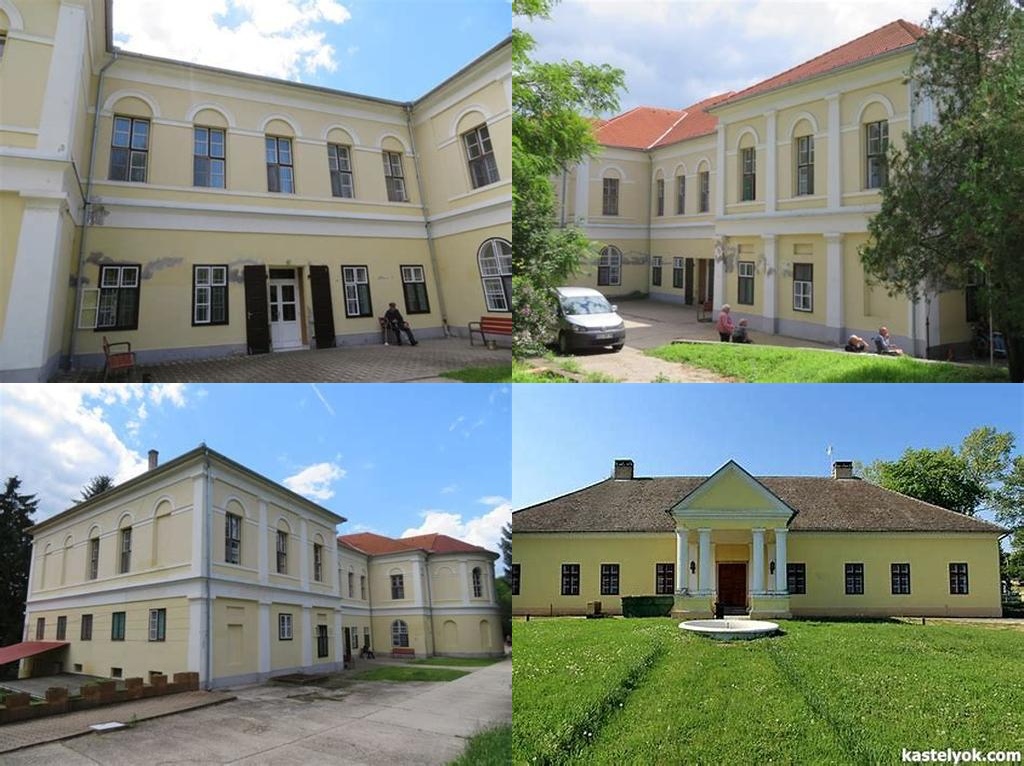
Sauska-kastély in the peaceful village of Somberek might not pop up on every traveler’s radar, but those who make the journey are almost always struck by its poised elegance and the compelling stories that echo through its halls. Walking up the gently tree-lined path, you start to sense the blend of history and quiet drama this classic mansion brings to rural Baranya county. The layout itself is both modest and stately, standing as a proud remnant of a time when country estates were the seat of both culture and community.
In the mid-19th century, Sauska-kastély was commissioned by the influential Sauska family, whose name has since become interwoven with both the fabric of Somberek and Hungarian architectural heritage. Constructed around 1850—a period of dynamic social change in Hungary—the castle is a fascinating reflection of evolving tastes. Unlike the grandly ornamented chateaux in other corners of Europe, this estate has always been about gentle sophistication and rural harmony. Its design features a measured neo-classical style, with clean, balanced lines and invitingly large windows that fill each room with soft, natural light. The ground floor’s high ceilings were not only symbols of status at that time but also practical spaces for hosting gatherings, concerts, and, occasionally, the town’s most pressing discussions. Even standing in these rooms now, you can imagine the hush before a performance or the jovial chatter drifting out to the gardens.
What really sets the castle apart isn’t just its architecture, but the lives and the legacies it has harbored. In its day, Count István Sauska—a prominent agricultural innovator and avid patron of the arts—used the estate as both home and hub. He supported local artists and introduced agricultural techniques that would benefit the entire region. While elements of nobility remain, the castle never quite sought to be aloof; it always retained a down-to-earth charm reflective of the people and the land around it. This spirit imbues every creaking floorboard and flickering shadow, and it still welcomes curious visitors with an understated warmth that is hard to find in more crowded tourist sites.
One of the undeniable highlights of any visit is wandering the park that envelops the mansion like a green velvet cloak. Designed partially in the English landscape style so popular during the time, this park is a patchwork of carefully planted oaks, ancient lindens, and a scatter of colorful seasonal blooms. During spring, the air is thick with the scent of lilac and the bird calls almost drown out the world beyond. In summer, dappled sunlight creates natural stages for impromptu picnics or contemplative walks. And if you’re the type to lose hours gazing at old stone benches and forgotten statuary, this is a place made for quiet discoveries. Even today, you might spot families making gentle circuits along the winding paths or local artists painting the soft brick-and-stucco façade—if the weather is fine, you may even see someone doing both at once!
It’s not all about the past, though. There’s an unhurried, lived-in quality here that feels refreshingly genuine. The rooms are modestly restored, hinting at the genteel way of life without feeling like a stuffy museum, and certain areas feature rotating exhibitions of folk art or photography. If you’re lucky, your trip will coincide with one of the rare open-air concerts or cultural afternoons, when the castle’s role as a gathering place is delightfully resurrected. Some say the echo of violins can almost be felt in the walls on these nights, whispering of balls and evenings long gone. The heart of Somberek beats quietly but insistently within these grounds. 🏰 It’s a different rhythm, a slow drawing-in of breath, a reminder of the time before constant notification pings and highway noise.
There’s also something about Sauska-kastély that naturally invites imagination. Take a moment in the old library, where books dating back to the nineteenth-century line high shelves, and you’ll find yourself reaching for stories you never knew you remembered. The scent of old paper and the hush beneath vaulted ceilings create a sanctuary for daydreamers and historians alike. Young visitors invariably end up exploring the garden maze, inventing their own games or perhaps searching for rumored hidden passageways—a legacy of countless tales told at sunset.
Most visitors leave feeling that they’ve glimpsed something rare: an encounter with understated beauty, alive with memory but entirely welcoming in the present. Sauska-kastély offers a window to another world—and in doing so, it gently reminds us of the deep ties between people, place, and history. Whether you come for an hour or an afternoon, you’re almost certain to find a little of yourself in its stories, and perhaps, as many do, you’ll want to linger just a bit longer beneath the ancient trees before returning to the whirl of the modern day.





